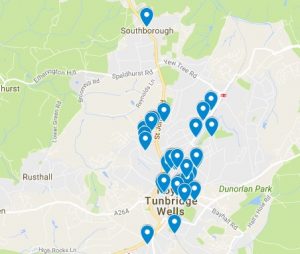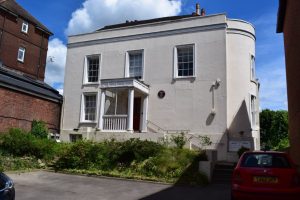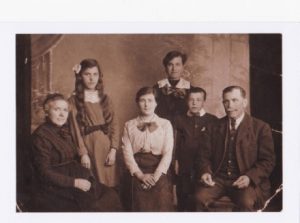The most basic necessity for the Belgian refugees when they arrived in the UK was a place to live. Families for example needed to find somewhere to stay where their children could be educated nearby.
Some refugees were fortunate enough to be able to provide for themselves or to turn to English friends or relatives. Others had to rely on the efforts of the voluntary committees.
This blog post looks at the work of the Royal Tunbridge Wells refugee committee in providing accommodation and at the experience of one Belgian family who came to the town and were looked after by the committee, the Van Aerschots, from Werchter.
In its final report the committee explained that the maximum number of refugees under their care was 131, made up of 96 adults and 35 children. The total cost of maintaining these people was estimated at £80 per week. In 2017 money, this is roughly between £5000 and £8,500 per week.
The map below shows the location of most of the 36 properties used by the committee. It can be seen that the majority were to be found in the town centre, with a smaller concentration in the High Brooms end of Upper Grosvenor Road, and another in the St John’s area. (Three properties in Southborough were listed but I can only locate two of them). The accommodation was divided into three categories: houses which were offered by the owners rent-free, houses which were rented by the committee (some furnished and some unfurnished), and apartment accommodation provided by the committee.

Map showing location of properties used by the Tunbridge Wells Refugees Committee (click here to explore the map)
The first house made available in the town itself was Grosvenor Lodge, which was offered free of charge by the Dodd family. One of the first families accommodated there was the Van Aerschot family. According to their registration forms, they arrived in London on 26 September 1914 and were accommodated at Alexandra Palace, which had been requisitioned by the government as one of the largest refugee reception centres. Official documents record on 2 October that the family were to be placed in the care of ‘Miss Le Lacheur’ of the Wilderness, Tunbridge Wells. In fact it was Mrs Lydia Le Lacheur who welcomed them to Grosvenor Lodge. It is highly likely that they were among the group of refugees whose arrival was reported in the Courier on 9 October ‘for whom arrangements have been made by Mrs Le Lacheur’.
The newspaper reported that ‘every provision has been made for [the refugees’] comfort’. An appeal had gone out for donations of furniture and for a cornucopia of household items, including bed, table and house linen, cutlery, crockery, coffee pots, candlesticks and toasting forks.

Grosvenor Lodge c.1910, showing members of the Dodd family
In addition to Grosvenor Lodge, the committee was also offered rent-free number 32, Upper Grosvenor Road by the Reverend Canon Keatinge. Both these properties were used to house refugees from October 1914 right through until April or May 1919. The Church Army home, also in Upper Grosvenor Road, was rented by the committee for £1 a week.

Grosvenor Lodge today (photograph by Anne Logan)
In addition to hostel accommodation (where, the committee admitted, there had been ‘some little difficulty in meeting the different views and habits of the Flemings and Walloons’), local people offered furnished and unfurnished houses and apartments. Where the committee had to furnish premises, they received the items needed either as gifts or as loans. Much thought was given to the comfort of those seeking refuge: the committee even appealed for donations of pianos and games, although these were in the category of ‘extras, not necessities’.
Generally speaking it was not uncommon for Belgians in First World War Britain to move premises or even locations, sometimes several times. Every time they did so they had to register with the local police. The Van Aerschot family moved to 194 Silverdale Road in 1916, which was another property maintained by the committee. From there, the thirteen-year-old Maria continued to attend the girls’ county school, now Tunbridge Wells Girls Grammar School.

Members of the Van Aerschot family. Source: private collection
The Tunbridge Wells Belgian refugee committee continued to provide accommodation until the early months of 1919, by which time the premises’ inhabitants had mainly returned home. However Maria Van Aerschot’s temporary sojourn in Tunbridge Wells left her with a lifelong friend, Enid Lakeman, who she met at school. Enid made many visits to Antwerp over the years to visit her Maria and her family.
With grateful thanks to Willy Van Leemput.
Sources:
Borough of Tunbridge Wells Belgian Refugee Committee Report, Belgian National Archives, Brussels.
Registration documents, Belgian National Archives.
Kent and Sussex Courier, 9 October 1914.
Tunbridge Wells Advertiser, 16 October 1914.
Personal communication.
